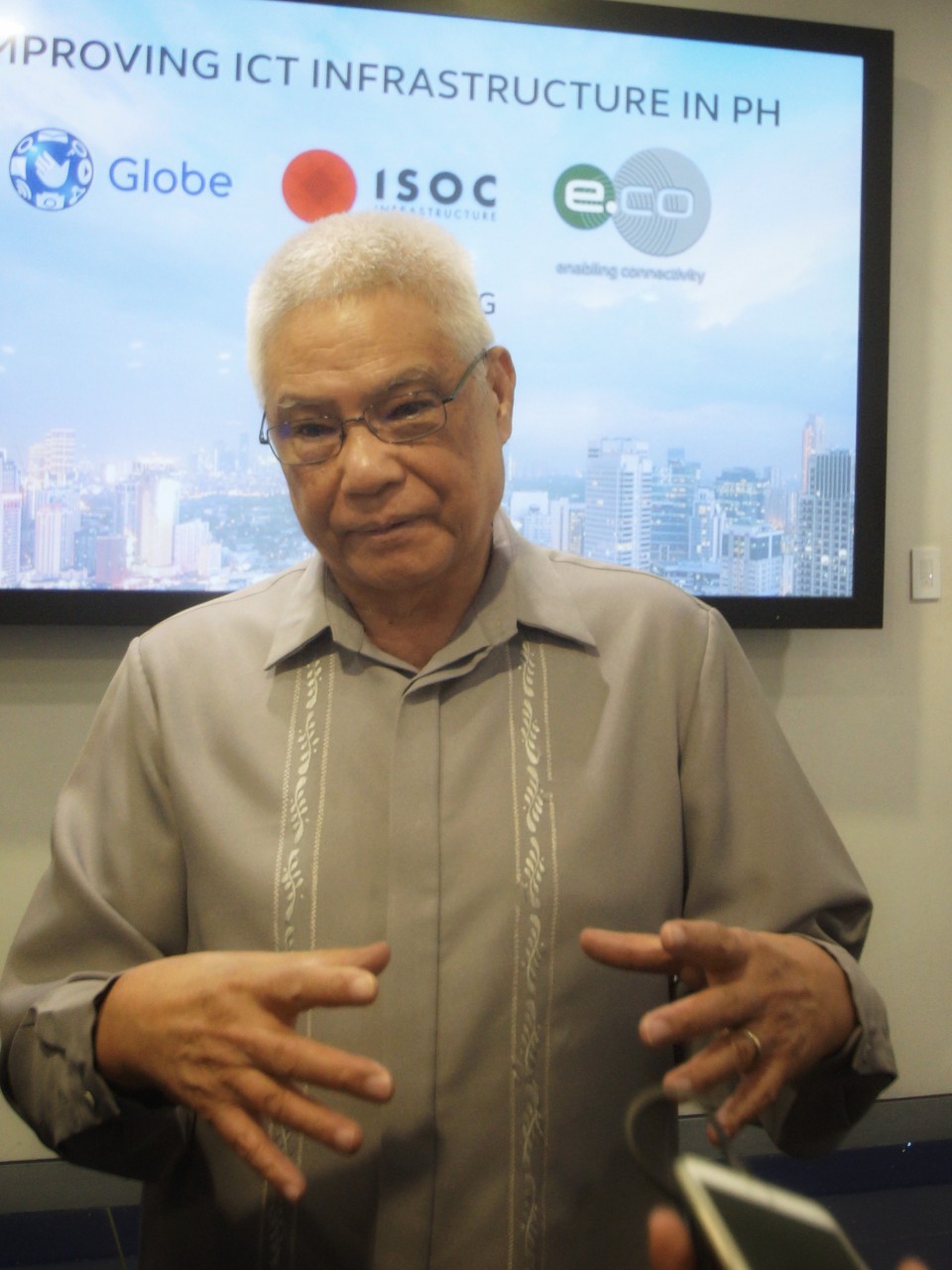Text and photo by Monsi A. Serrano
In his desire to realize interconnectivity throughout the archipelagic reaches of the Philippines, Department of Information and Communications Technology (DICT) Acting Secretary Eliseo Rio, Jr. is seeking an act of the President to streamline the process of approval for building common towers.
Rio said the best and fastest way to achieve interconnectivity in the country is through an executive order from President Duterte to fast-track support infrastructure for the telecommunications industry much at the same speed as his “Build, Build, Build” program.
He revealed that there is an opportunity to make a big leap in terms of infrastructure support for interconnectivity as many independent telecom tower companies are lining up to build common towers, but the approval process is too long and tedious.
Rio admitted that the long list of permits and the number of agencies involved in securing these permits to build a tower is not just unnecessary but also impractical. “Given the fact that getting a permit to build a tower takes around one year because you need to get around 27-28 permits in all the involved government agencies at the national and local levels. With this kind of process, it becomes prone to corruption,” he said.
“That is the reason why I will appeal to the President to come up with an Executive Order in making the processing of permits easier and remove the unnecessary agencies that hinder the efficiency of the implementation,” he added.
Connectivity for every Filipino
Rio said he wants to be able to leave a legacy in the DICT and he knows that he shares the same advocacy with the President. “President Duterte wants every Filipino to be connected even in the countryside,” he said.
However, Rio added: “In as much as we want to make this happen, so many obstructions come along the way. For instance, in subdivision residents don’t like it because of the perceived danger of radiation. But look at Quezon City where you see a lot of transmitter towers of various TV and radio networks. These are more powerful than cell sites in terms of emission of radiation, and the cellphones are more direct.”
EO fixes the problem
Rio explained that it is a big turn-off to investors if government processes take a year because they demand a reasonable time for their return of investment (ROI).
“We have ARTA (Anti-Red Tape Act) law now, and let those who make it difficult and the agencies that cause of delay be prosecuted to avoid unnecessary problems. By doing that, investors would be delighted because the Philippine government means business,” he said.
“If there is an Executive Order coming from the President, those who would be the cause of unjustified delays will be held accountable. Down in the municipality level, the issue is how they will tax it,” he added.
But the DICT Chief clarified that there are also some national government agencies that are very cooperative like the Departments of Public Works and Highways (DPWH), of Environment and Natural Resources (DENR), and of Tourism (DOT).
“We need teamwork to make this happens, and as the saying goes, “Teamwork makes the dream work”, Rio concluded. other conventional telecommunications systems are down.
Cellsites are key
The key to achieving interconnectivity is the building of cell site towers and the DICT Chief cited the push given by Globe Telecom and its partners for helping the government towards this goal.
“We need more cell sites to achieve connectivity. Let us thank those who are willing to make this happen, like Globe and its partners ISOC Infrastructure and edotco,” he said. “This is a welcome development. Our target is to achieve 50,000 common towers in 7-10 years and when this is achieved we are not going to have an issue on connectivity anymore.”
Globe recently entered into a tripartite agreement with ISOC Infrastructure Inc. and Malaysia-based tower giant edotco Group Sdn. Bhd., becoming the first telecommunications company (telco) to support the DICT’s common tower initiative.
Globe President and CEO Ernest Cu harped on ICT infrastructure as the foundation of a highly-connected digital economy and Globe’s desire to be the first mobile operator to support the government’s common tower initiative in building this foundation.
Cu said Globe’s commitment, with the help of ISOC and edotco, is to build an initial 150 cell sites for the company. “The building and deployment of cellular towers in the country are critical if we hope to change the Internet experience of our customers,” he said.














